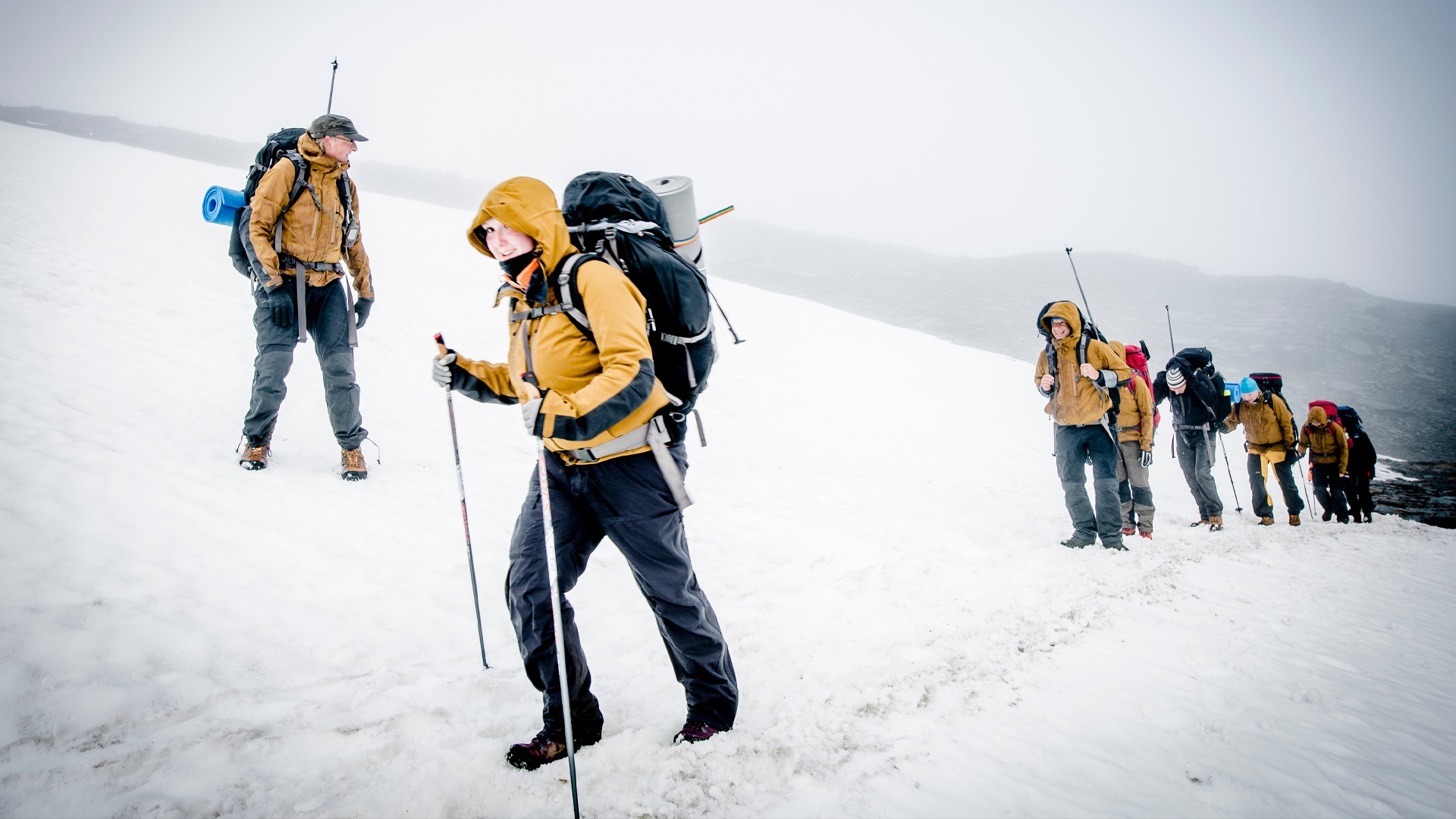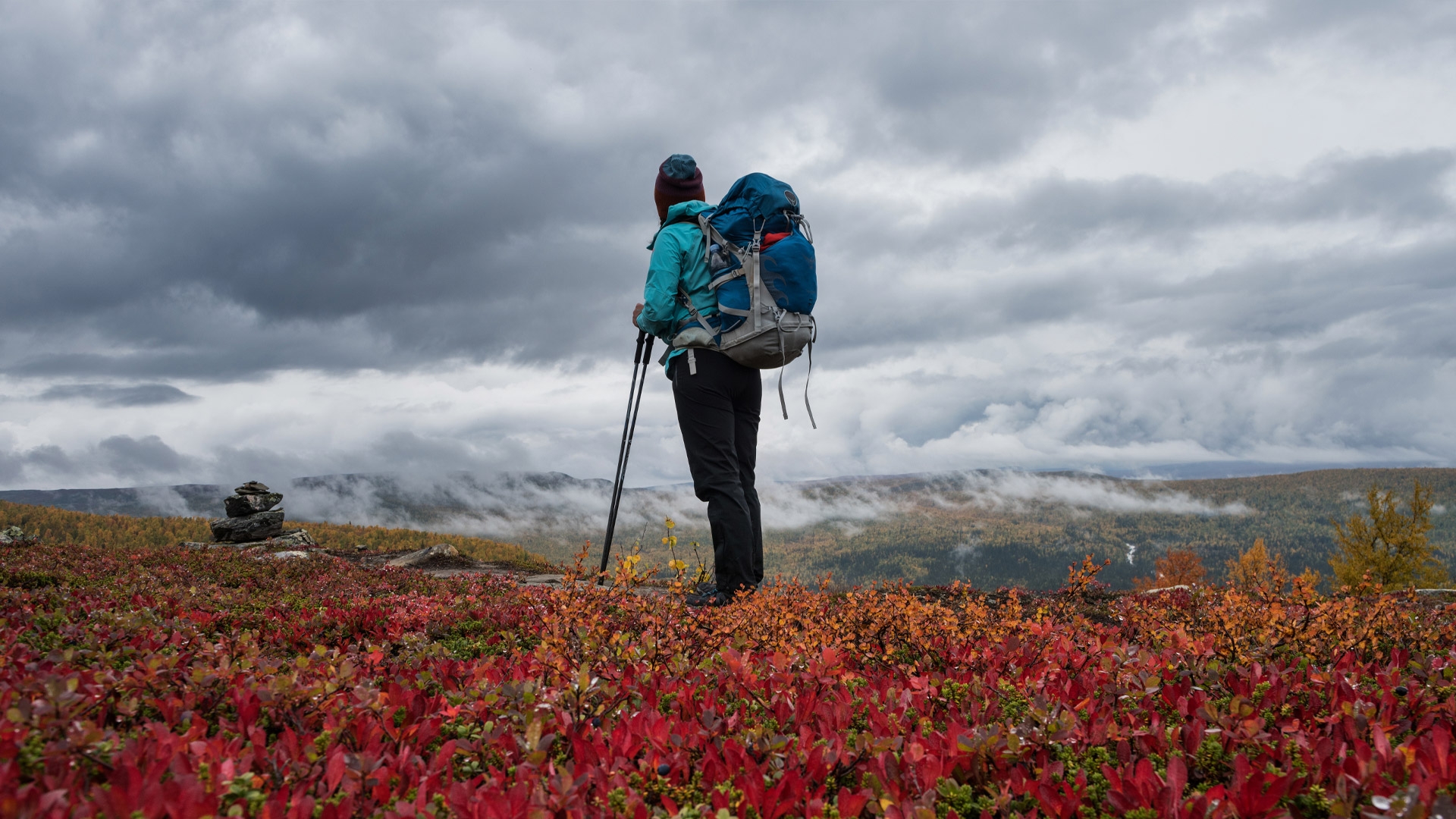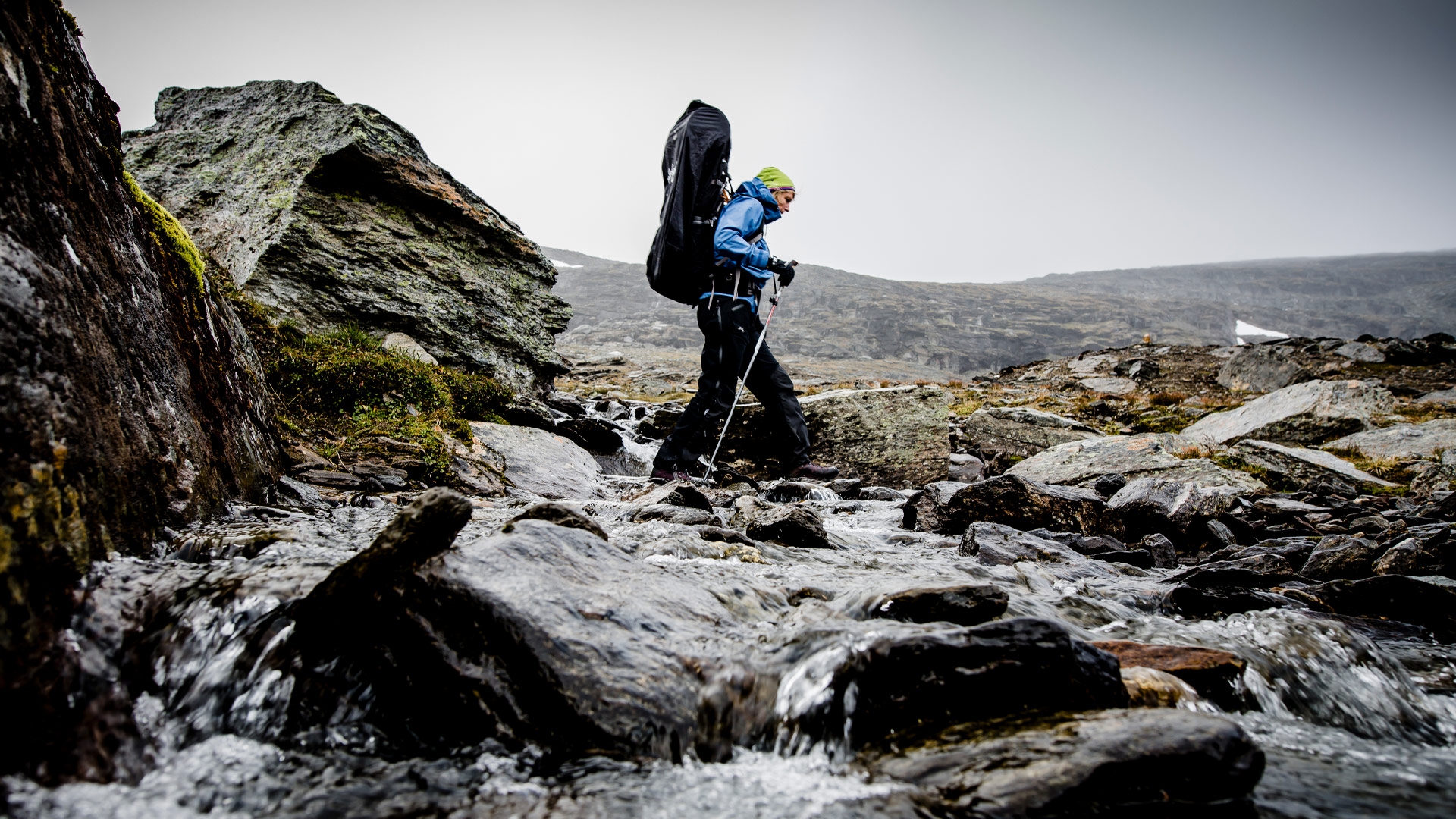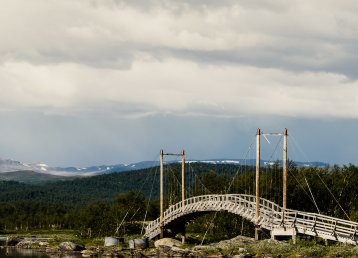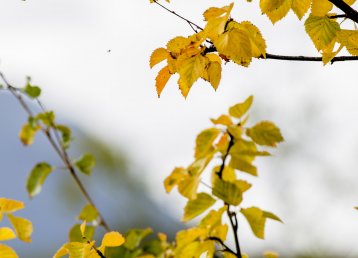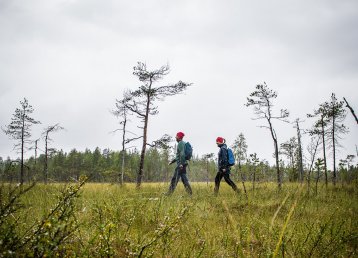Prepare properly
Ask experienced hikers for advice
A good way of getting up-to-date and to get useful information is to ask experienced mountain hikers. People who spend time in the mountains can give you important information, so contact locals, cabin managers, people who work for the STF (Swedish Tourist Association) or the local tourist information to ask about recommended routes, water levels, bridges, time management, terrain and other things that make your hike easier to plan. There are also local mountain safety committees with considerable knowledge of mountains in their respective regions. Contact details are found on the Mountain Safety Council website.
Choose the right season
What time of year is best suited to mountain hiking? The mountain hiking season lasts from June to September, broadly speaking, but conditions vary from year to year during that time. Check snow and water levels before you head out. In June there might be plenty of snow on the trails and a lot of water in the streams. The first autumn snow often falls in August. But higher up, around Kebnekaise for example, large areas are covered in snow all year round.
Notify someone about your route and planned return
Before you leave, inform a family member or a cabin manager about your route and planned return. It’s important that someone knows your planned route and when you expect to return, so they can raise the alarm if you don’t come back as planned. In mountain cabins and shelters there are guest books where you should make a note to show you’ve been there. If someone is reported missing these messages can be useful.
When you calculate how long it will take, don’t count on more than 3 km/hour and add an extra hour per every 100 height metres. It takes even longer for many, so add time if you know you’ll want to walk at a slow pace, stop and enjoy the surroundings, or feel that you could perhaps be in even better shape.
Adjust your hike to the weather
Often the mountain weather can be considered extreme in the sense that one moment it’s warm and sunny, the next the wind picks up and it starts to snow. During a day trip in the mountains, you might experience all kinds of weather – which is an experience in itself – and that’s why it’s important to pack clothes to be able to cope with all weather conditions.
Since the weather in the mountains is prone to quick changes it’s always a good idea to check the forecast on the radio, the web or through one of the various mobile apps on the market, from SMHI for example. For your own safety: always respect mountain weather alerts. The cabin managers along the trails often have updated forecasts.
The weather always gets the final say. It decides what’s possible or not when you’re in the mountains, and whether your planned hike can be done at all. Not all summer days are suitable for an attempt on Kebnekaise, for example. Safety must always come first.
Train, train and then train some more
Before you go hiking in the mountains: train, mountain hiking is no ‘walk in the park’. This is an Arctic environment, and it demands physical exertion. If the weather is bad, you might run out of steam very quickly. Start improving both stamina and strength in good time before you leave. Then adapt your hike to your ability.
Book a helicopter or a boat
If the hike feels too long, it might be a good idea to book a helicopter or a boat for some stretches. Read more about boats here and helicopters here (in Swedish only). You can also contact a mountain station in the area where you are about to hike and get some useful information from those who work there.
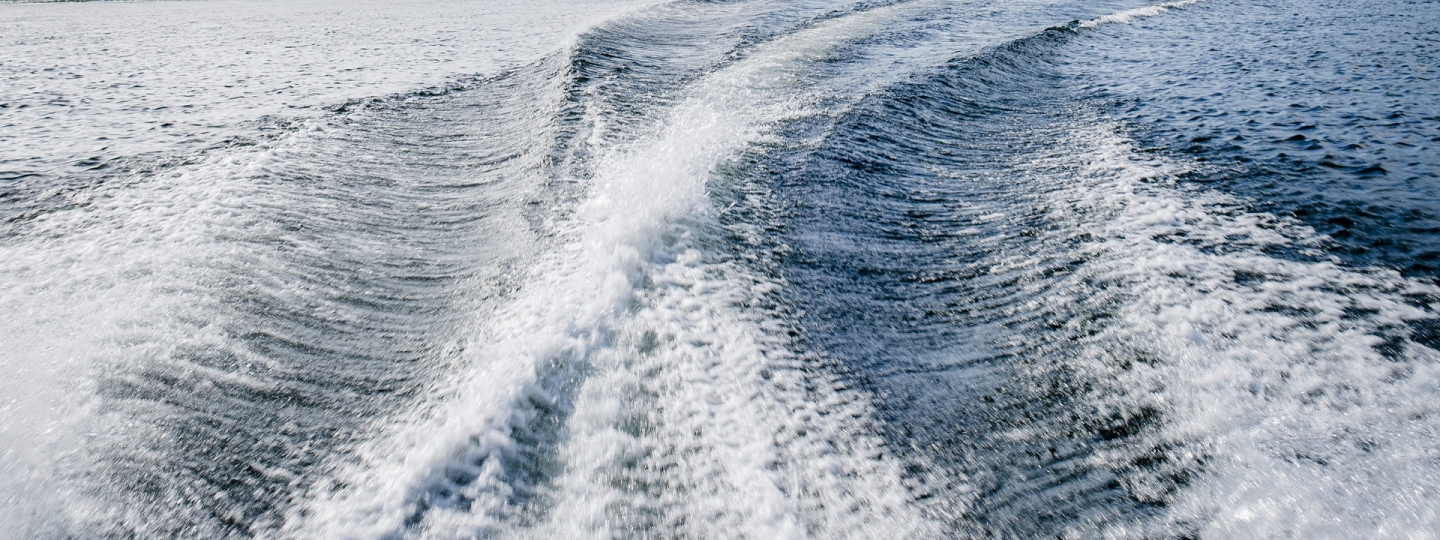
Prebook a helicopter or a boat
If the hike feels too long, it might be a good idea to book a helicopter or a boat for some stretches.
During the trek
Follow signposted trails
There are thousands of kilometres’ worth of signposted trails in the mountains, with distance markers, overnight cabins and emergency phones. It’s wise to follow the trails. Remember that the red crosses mark winter trails, not always suitable to follow in summer as they might pass straight through lakes and marshlands. Summer hikes are marked with stones that are painted red.
Cross waters carefully
If you need to wade do it carefully and never take any risks. Along the main trails, you’ll seldom have to cross water, but if you have to these are good pointers to keep in mind:
- Never wade without shoes, use sneakers or sandals.
- Use a hiking pole as support and move one foot at the time.
- Never go in above your knees if it’s rapidly-flowing water.
- The shallowest part is often found where the brook is widest.
- During the morning hours there’s normally less water.
- Walk diagonally against the stream.
- Unfasten the waist belt of your rucksack.
- Never take any risks.
Use a map and compass
Make sure you bring a map and a compass and remember maps have expiry dates, so always bring the latest edition. Using them takes a bit of practice though, so you’ll have to learn how to use them and practise, practise and practise some more. When you really need your map and compass they don’t come with a manual, so you’ll have to learn how to follow your route on the map. That way, you’ll always know exactly where you are. GPS and mobile apps that access mountain maps are handy, but remember batteries don’t last as long when it’s cold outside. Also, the same thing goes for a GPS as for a map and compass: practice, practice and practice some more.
One idea is to navigate using a map and compass and every now and then use the GPS to check your route: is this the right direction, how much further to go, and so on.
Emergency phone
Emergency phones are available in most mountain cabins and some shelters along the trails. Check what mountain stations you pass in advance. The emergency phone lets you contact the local police and the mountain rescue. Use the emergency phone to raise the alarm if something happens or to inform about a delay, for example, making sure family members don’t worry and raise the alarm unnecessarily. If you feel insecure, you can use the emergency phones to ask for help – never take any risks.
Mobile phones in the mountains
Remember you can’t count on mobile coverage in the mountains. It’s still a good item to bring, though, but with an extra battery or power bank. Some activity companies have satellite phones and emergency beacons for rent.
Food and water
Bring enough food and water for your entire route. We have plenty of clean water in our nature but have in mind that it’s difficult to see if the water is contaminated. Even though contaminated water in our mountains is rare, the safest alternative is to boil the water for a couple of minutes.
Reindeer
The Sámi have lived and worked for thousands of years in these mountains. If you meet grazing reindeer on your trip, don’t disturb them. If possible, walk around the reindeer. If you come across a travelling herd, take a seat and wait until they have passed. In the spring, when calves are born, they are extra sensitive to disturbances.
If you have an accident
If it’s an emergency call 112 as soon as possible unless there is a shelter or mountain cabin with an emergency phone nearby. It’s essential to remember that there is no mobile coverage in most mountain areas.
Also read
The higher landMountain rescue
You can reach the mountain rescue through the emergency phones placed in various locations, but you can also reach them on a normal phone through the emergency number 112.
Once you’re out in the mountains your safety is paramount. The list below summarises the most important points to remember:
- Find out more about the area before you head out: ask locals, the tourist information or experienced mountaineers.
- Train! Choose a hike that suits your ability.
- Leave a notification with a family member
- Be clever when packing, and pack the right things.
- Stay on the trails.
- Be careful when you cross waters and if the weather changes.
- Contact the mountain rescue in cases of serious illness or emergencies.
If you feel unsure about your hike or you’re still planning it, there are guided tours available where companies help you with everything: from planning your mountain hike to arranging guided tours you can join.
One more thing before you head out into our beautiful mountains: please leave them as they were before you got there. Always bring a bin bag and take all your rubbish back with you.
Most importantly: have a great hike!
Guided hiking trips
There are several companies around Swedish Lapland that offers guided hiking trips, and some of them also offers guidance when planning your own trip. Here are some:
Ammarnäs Guidecenter
Lapland Resorts Björkliden
Jokkmokksguiderna
Laponia Adventures
NordTrek
STF Abisko
STF Saltoluokta















